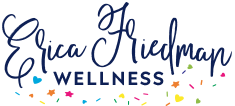Gentle Movement for Early Postpartum
"What exercises can I do early postpartum?" I often receive this question from clients eager to return to exercise after baby. But, before we get started, let's talk about how birth is a HUGE deal. You just grew and birthed a human - that's amazing <3 Postpartum recovery is incredibly important, not only to support the healing process, but for the overall health of mom and baby. In the first six week after baby is born priorities are:
Recover from birth
Rest (whenever possible)
Establish a feeding routine
Establish gentle movements and re-establish good breathing patterns and core-pelvic floor connection
Moving slowly through this period will ultimately help you reach your goals faster. As a coach there are four (4) ways I can support you during the early postpartum period.
1. Teaching the Connection Breath: This breath focuses on a good breathing pattern with core and pelvic floor muscle activation, helping create awareness through the trunk, as well as better muscle function and coordination. The connection breath is one of the first exercises I recommend postpartum, and is incredibly effective at activating and strengthening the inner/deep core (diaphragm, transverse abdominals, pelvic floor, and multifidus).
How to perform a Connection Breath:
On the inhale, focus on expanding your ribcage 360 degrees (like an umbrella opening), feeling movement and expansion as your belly, glutes, and pelvic floor relax.
On the exhale, breathe the air "out" of your ribcage, belly, and base of your pelvis. As you blow out with pursed lips (or a "haaa" breath) gently contract the pelvic floor. The transverse abdominals should follow as well.
What is the difference between diaphragmatic breathing and the Connection Breath? The connection breath is a diaphragmatic breath with the added layer of a pelvic floor contraction (kegel).You can experiment with the Connection Breath in different positions, starting in side lying or on your back, and eventually progressing to seated, on all fours, and standing. Once you have mastered the Connection Breath you can also use it as a strategy to support your core and pelvic floor during exercise and daily activities in mom life.
2. Provide guidance around walking: Walking is convenient, low cost, and a great way to get out of the house with baby in tow. Regardless of delivery method the body needs ample recovery time and we want to avoid too much too soon, even with something like a walk around the neighborhood.I recommend starting by doing a walk around the block (about 10 minutes) on your first outing. If it's feasible, have your partner or a family member push the stroller. This will allow you the opportunity to work on your arm swing and trunk rotation. If there is no heaviness, pain, or bleeding after this walk, you can start extending in small increments of time/distance. I recommend two short walks per day as opposed to one long walk. Below are few recommendations.
1-2 weeks postpartum: 1-2 short walks / day (10 minutes)
3-4 weeks postpartum: same time/distance or add 5 minutes
5-6 weeks postpartum: same/time distance or add 10 minutes (15-20 minutes/day)
Please note that all mamas are different. Tune in to your symptoms and check in with your provider if you experience any bleeding, dizziness, heaviness, or scar irritation.
3. Encourage basic stretching and mobility: In the early days postpartum, many mamas find that gentle movement feels soothing for sore muscles and aching joints. I recommend starting with gentle movements in a supine position (on your back) or side lying, and build from there. Examples include:
Knee rolls
Pelvic Tilts
Both of these exercises also incorporate a bit of low level abdominal muscle activation. Mobility work for the neck, shoulders, and upper back also feel great. Examples include:
Neck Stretch
Thoracic Rotation: windmill and open book
Shoulder Circles
The goal is to keep these early movements gentle and not overly complex. As a new mama you have a lot going on.
4. Encourage Optimal Alignment After baby arrives things just feel a bit different. The diaphragm and ribcage are settling in to their pre-pregnancy position and the baby is no longer weighing on the pelvic floor. The body is still adjusting, and things may feel a bit different.While there is no "perfect posture," working on body awareness can be very helpful while the body is recovering. The general alignment of body parts / markers allow for a better breath, better activation of the deep core system, and decreased discomforts. A few helpful tips:
Knees straight, but avoid locking out (hyperextending).
Pelvis in a neutral position with a gentle curve in the lower back. This in itself may be very challenging for a new mom.
Unclench the booty.
Ribcage stacked over pelvis, sternum and pubic bone vertically aligned.
Head stacked nicely over chest.
From the side it is helpful to think about lining up the middle of the ear, shoulder, hips, and a spot in front of the ankle.The first six (6) weeks postpartum are an important time for rest, connection, and bonding with baby. If you have any questions about returning to movement during this time I encourage you to first check in with your healthcare provider and make an appointment with a Pelvic Floor Physical Therapist.
Once you are medically cleared I look forward to supporting you. Check out my FREE Guide for the first 6 weeks postpartum with great tips and exercises for reintroducing movement after baby.
Questions about Returning to Exercise? I'd love to chat! You can schedule a free 15-minute consult call with me here. Feel good mama.
xoxo,
Erica




